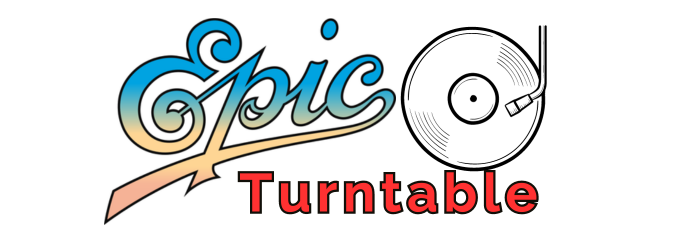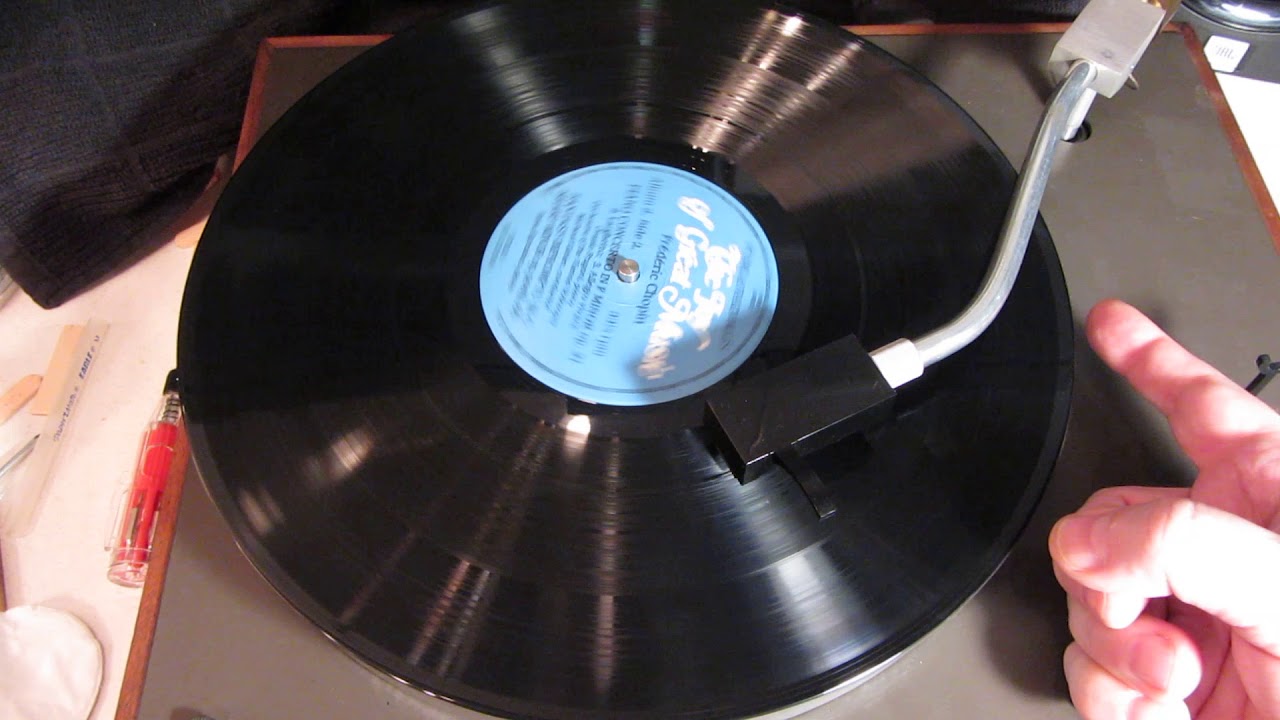Imagine being able to enjoy all your favorite vinyl records, whether they are long-playing albums or extended-play singles, on a single turntable. Well, the good news is that you don’t have to choose between the two formats anymore. A turntable record player is capable of playing both LPs and EPs with ease. Whether you’re in the mood for the immersive experience of a full-length album or a quick burst of musical bliss from a single, your trusty turntable has got you covered. So, dust off those vinyl treasures and get ready to relish every groove, no matter the format, as your turntable becomes the hub of your music journey.
Differentiating LPs and EPs
What are LPs?
LP stands for “Long Playing” and refers to a vinyl record format that typically contains a full-length album with multiple songs. LPs were introduced in the late 1940s and became the favored format for music distribution until the rise of digital media. They are larger in size, typically 12 inches in diameter, and play at a speed of 33 1/3 revolutions per minute (RPM). LPs can hold a significant amount of music, allowing artists to showcase their creativity and express their narratives through a cohesive collection of songs.
What are EPs?
EP stands for “Extended Play” and is another vinyl record format that contains fewer songs than an LP. EPs originated in the 1950s as a way to release singles or compilations of songs that were shorter in length than a full album. They typically consist of four to six tracks and can be seen as a bridge between a single and an album. EPs can offer a taste of an artist’s work, providing a snapshot of their musical style or a theme they want to explore. They are often used as a promotional tool or a way for artists to experiment with different sounds.
Differences between LPs and EPs
The main difference between LPs and EPs lies in the number of songs and the overall length of the record. LPs offer a more extensive collection of songs, allowing artists to create a cohesive experience for the listener. On the other hand, EPs provide a shorter and more focused selection of tracks, offering a taste of an artist’s work without the commitment of a full album. Additionally, LPs are typically played at 33 1/3 RPM, while EPs can vary in speed depending on the specific release. Although both formats share the same vinyl material, they serve different purposes in terms of artistic expression and audience engagement.
Understanding Turntable Record Players
How do turntable record players work?
Turntable record players play vinyl records by rotating them at a constant speed while a stylus, or needle, runs along the grooves of the record. When the stylus encounters variations in the groove, it vibrates, transforming these vibrations into electrical signals. These electrical signals are then amplified and sent to speakers, producing the analog sound that is characteristic of vinyl records. Turntable record players typically consist of a platter, a motor, a tonearm, a cartridge, and a stylus, all working together to deliver a high-quality audio experience.
Components of a turntable record player
Platter: The platter is the rotating platform on which the vinyl record is placed. It provides stability and ensures a smooth rotation, minimizing any disturbances that could affect sound quality.
- Motor: The motor is responsible for spinning the platter at a consistent speed. It can be belt-driven, where a rubber belt connects the motor to the platter, or direct-drive, where the motor is directly connected to the platter.
- Tonearm: The tonearm holds the cartridge and the stylus, guiding them along the grooves of the record. It ensures proper tracking and helps to maintain the stylus in contact with the record surface.
- Cartridge: The cartridge is a crucial component that houses the stylus. It contains coils and magnets that convert the mechanical vibrations into electrical signals.
- Stylus: The stylus, also known as the needle, is the part that comes into direct contact with the grooves of the record. It traces the modulations of the groove and generates the vibrations that are picked up by the cartridge.
Compatibility of Turntable Record Players
Can turntable record players play both LPs and EPs?
Yes, turntable record players can play both LPs and EPs. The essential factor is the speed setting of the turntable, which determines the RPM at which the record rotates. Most modern turntables have the option to switch between 33 1/3 RPM and 45 RPM, allowing you to play both LPs and EPs. However, it’s essential to ensure that the turntable you choose has this feature, as some older or more basic models may only support one speed setting.
Considerations for playing different formats
When playing different vinyl formats on a turntable record player, it’s crucial to consider a few factors to ensure optimal playback. Firstly, make sure to set the correct speed setting on your turntable depending on the format you are playing. LPs require a speed of 33 1/3 RPM, while EPs typically play at 45 RPM. Playing a record at the wrong speed can result in distorted audio and an inaccurate listening experience.
Additionally, you should also consider the stylus size and tracking force compatibility. Different stylus sizes are designed to accommodate the grooves of different vinyl formats. LPs generally require a larger stylus size to accurately reproduce the music, while EPs may benefit from a smaller stylus size for optimal tracking on shorter tracks. It’s essential to consult the manufacturer’s recommendations for the appropriate stylus size for each format to achieve the best sound quality and avoid unnecessary wear on your records.
Key Features and Specifications
Speed settings of turntable record players
One key feature of turntable record players is the ability to adjust the speed settings. Most modern turntables offer two speed settings – 33 1/3 RPM for LPs and 45 RPM for EPs and singles. This versatility allows you to enjoy a wide range of vinyl formats without the need for multiple turntables or adjustments.
Tonearm and stylus compatibility
Another important consideration is the compatibility between the tonearm and the stylus. Some turntables may come with fixed tonearms, limiting your options for stylus compatibility. It is generally recommended to choose a turntable with a removable and adjustable tonearm, allowing you to switch between different stylus sizes depending on the vinyl format you are playing.
Adjustable tracking force
The tracking force refers to the amount of pressure applied by the stylus onto the record surface. Different vinyl formats may require varying tracking forces to achieve optimal playback. Adjustable tracking force is a desirable feature in turntable record players as it allows you to fine-tune the setup according to the specific requirements of the vinyl format you are playing, ensuring accurate tracking and minimizing wear on your records.
Table size and platter weight
The size of the turntable table and the weight of the platter can also impact the overall performance and stability of the record player. A larger table provides better support for the platter and helps reduce vibrations that could affect sound quality. Additionally, a heavier platter can provide better rotational stability and reduce the likelihood of speed fluctuations during playback. These considerations are crucial for achieving consistent and accurate audio reproduction.
Playing LPs on a Turntable Record Player
Procedures for playing LPs
To play an LP on a turntable record player, follow these steps:
- Ensure that your turntable is set to the correct speed setting for LPs, which is 33 1/3 RPM.
- Place the LP carefully onto the platter, ensuring that the spindle aligns with the center hole of the record.
- Lower the tonearm gently onto the record surface, making sure that the stylus makes contact with the grooves.
- Start the turntable and enjoy the music!
Recommended stylus size for LPs
LPs typically require a larger stylus size to accurately reproduce the music. A stylus with a larger contact surface area can accurately trace the wider grooves of an LP, resulting in better fidelity and sound quality. It is recommended to consult the manufacturer’s recommendations for the appropriate stylus size for playing LPs on your specific turntable model.
Maintaining the health of LPs
To ensure the longevity and health of your LPs, it is essential to handle them with care. Avoid touching the playing surface or exposing them to excessive dust and dirt. Always store them in protective sleeves when not in use and avoid exposing them to extreme temperatures or direct sunlight, as these can warp the vinyl and degrade the sound quality. Regularly cleaning your LPs and using a dust cover for your turntable can also help remove any dirt or debris that could affect playback.
Playing EPs on a Turntable Record Player
Procedures for playing EPs
To play an EP on a turntable record player, follow these steps:
- Confirm that your turntable can accommodate the speed requirements of the EP. EPs typically play at 45 RPM, so ensure that your turntable has this option.
- Place the EP carefully onto the platter, aligning the center hole with the spindle.
- Adjust the speed setting on your turntable to 45 RPM.
- Lower the tonearm onto the record surface, ensuring proper contact between the stylus and the grooves.
- Start the turntable and enjoy the music!
Recommended stylus size for EPs
EPs may benefit from a smaller stylus size for optimal tracking on shorter tracks. As with LPs, it is essential to refer to the manufacturer’s recommendations for the appropriate stylus size for playing EPs on your turntable model. Using the correct stylus size ensures accurate tracking and reduces the risk of causing unnecessary wear on your records.
Maintaining the health of EPs
The same care and precautions taken for LPs should be applied to EPs to maintain their health and longevity. Handle them gently, avoid touching the playing surface, and store them in protective sleeves when not in use. Regular cleaning and maintaining a clean turntable setup will help preserve the sound quality of your EPs.
Considerations for Playing Both Formats
Changing stylus sizes
When transitioning between playing LPs and EPs on a turntable record player, you may need to change the stylus size to achieve optimal playback. Refer to the manufacturer’s guidelines for your specific turntable model to determine the appropriate stylus size for each format. Some turntables may offer a cartridge with interchangeable styli, allowing you to easily switch between sizes.
Adapting turntable speed
To play both LPs and EPs seamlessly, it is necessary to have a turntable with adjustable speed settings. Make sure your turntable has the flexibility to switch between 33 1/3 RPM for LPs and 45 RPM for EPs. This feature allows you to accommodate the specific speed requirements of each format and achieve accurate playback.
Organizing your vinyl collection
As a vinyl enthusiast, organizing your collection becomes crucial when playing both LPs and EPs. Separating them into distinct sections or using dividers can help you quickly identify which records belong to each format. Additionally, consider creating a catalog or database to keep track of your collection, including details such as artist, album title, release year, and vinyl format. This organization will make it easier to select the right record and ensure a smooth transition between playing LPs and EPs.
Maintenance and Care
Cleaning the turntable
Regularly cleaning your turntable is essential for maintaining optimal performance and sound quality. Use a soft, lint-free cloth to wipe the dust and debris off the platter, tonearm, and stylus. Avoid using harsh cleaning agents or excessive moisture, as this can damage the components of the turntable. It is also recommended to invest in a specialized turntable cleaning brush to remove any stubborn dirt from the grooves of your records.
Storing vinyl records
Proper storage is crucial for preserving the condition of your vinyl records. Keep them in a vertical position, ideally in a cool and dry environment, away from direct sunlight or extreme temperature fluctuations. Using protective sleeves for each record and storing them in dedicated record storage units or shelves can help prevent dust, scratches, and warping.
Maintenance tips for stylus and cartridges
Maintaining the stylus and cartridge of your turntable is vital for optimal sound reproduction. Regularly inspect the stylus for any signs of wear or damage and replace it as necessary. Clean the stylus using a specialized stylus brush or a stylus cleaner fluid to remove any accumulated debris. It is also advisable to consult the manufacturer’s recommendations for cartridge maintenance, as some models may require additional care such as alignment or anti-skate adjustment.
Pros and Cons of Playing Both Formats
Advantages of playing LPs and EPs on a turntable record player
Playing both LPs and EPs on a turntable record player offers several advantages. Firstly, it allows you to explore a wider range of music, as artists often release different formats for various purposes. LPs provide a complete album experience, while EPs offer a more condensed and focused selection. Additionally, vinyl records, regardless of the format, provide a unique and warm analog sound that many audiophiles appreciate. The nostalgia and tactile experience of handling and playing vinyl records can also enhance the overall enjoyment of the music.
Disadvantages of playing LPs and EPs on a turntable record player
While playing LPs and EPs on a turntable record player can be a rewarding experience, there are some disadvantages to consider. Vinyl records require careful handling and proper maintenance to avoid damage and degradation. Additionally, the limited playback time of EPs compared to LPs means that you may need to switch records more frequently if you prefer continuous background music. The cost of building and maintaining a vinyl collection can also be a factor to consider, as records can be more expensive compared to digital formats.
Conclusion
In conclusion, turntable record players can play both LPs and EPs, offering a versatile platform for enjoying a wide range of musical formats. By understanding the differences between LPs and EPs and following the recommended procedures for playing each format, you can ensure optimal audio playback and preserve the health of your vinyl records. With the right set of features and thoughtful maintenance, playing both LPs and EPs on a turntable can provide a unique and immersive music experience, allowing you to appreciate the richness and authenticity of analog sound. So, grab your favorite records, set up your turntable, and enjoy the magic of vinyl music!

Hi there! I’m Eric Hoffman, the author behind EpicTurntable.com. I’m passionate about revolutionizing your music experience through vinyl. At EpicTurntable.com, you’ll find everything you need – from turntables and vinyl records to accessories. Whether you’re an audiophile or just starting out, I offer expert reviews, insightful articles, and the latest trends in the world of turntables. Dive into our community forums to connect with fellow vinyl lovers, or explore our online store for exclusive deals. Join me at EpicTurntable.com, where I’m dedicated to bringing you the classics and the latest hits all in one place!

